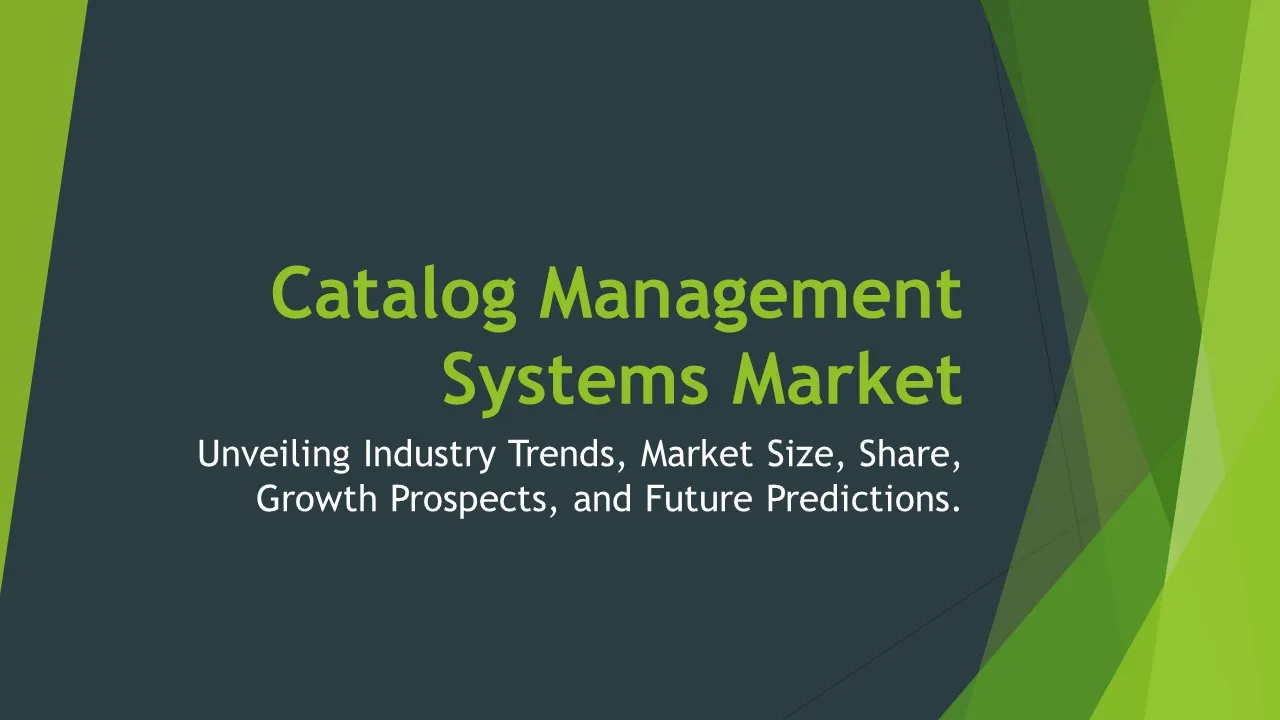Cloud Computing in Cell Biology Genomics and Drug Development
Cloud Computing Market Segments - by Service Model (Infrastructure as a Service, Platform as a Service, Software as a Service), Deployment Model (Public Cloud, Private Cloud, Hybrid Cloud), Organization Size (Small and Medium Enterprises, Large Enterprises), End-User (Healthcare, Biotechnology, Pharmaceutical), and Region (North America, Europe, Asia Pacific, Latin America, Middle East & Africa) - Global Industry Analysis, Growth, Share, Size, Trends, and Forecast 2025-2035
- Report Preview
- Table Of Content
- Segments
- Methodology
Cloud Computing in Cell Biology Genomics and Drug Development Market Outlook
The global cloud computing market, specifically in cell biology genomics and drug development, is projected to reach approximately USD 100 billion by 2035, with a compound annual growth rate (CAGR) of around 15% from 2025 to 2035. This growth is primarily driven by the increasing demand for advanced data analytics and computational biology tools that enable researchers to process vast amounts of genomic data efficiently. Moreover, the rising trend of personalized medicine and the need for collaborative research in drug development are also significant factors contributing to this growth. As drug development becomes more complex and requires extensive datasets, the scalability and flexibility of cloud computing solutions are increasingly recognized as essential components for success in the biotech and pharmaceutical sectors. Furthermore, the ongoing advancements in cloud technology and infrastructure are steadily improving access to powerful computational resources, which is critical for accelerating research timelines.
Growth Factor of the Market
The growth of the cloud computing market in cell biology genomics and drug development is largely attributed to the enhanced efficiency that cloud solutions provide to researchers and developers. By utilizing cloud resources, organizations can rapidly analyze large datasets generated in genomics without the need for substantial upfront investments in hardware. Additionally, cloud computing offers greater flexibility, allowing organizations to scale their computational resources according to the needs of their projects. This scalability is particularly beneficial for organizations dealing with fluctuating workloads, as it enables them to optimize their operational costs. The collaborative nature of cloud platforms further drives market growth, as they allow multidisciplinary teams from various geographical locations to work together seamlessly. Moreover, the increasing regulatory approval of cloud-based solutions in healthcare and life sciences is also a crucial factor, as it enhances trust and encourages adoption among pharmaceutical companies and research institutions.
Key Highlights of the Market
- The global cloud computing market in genomics and drug development is expected to reach USD 100 billion by 2035.
- The market is projected to grow at a CAGR of around 15% during the forecast period of 2025 to 2035.
- The increasing demand for advanced data analytics and computational biology tools is a primary driver of market growth.
- Cloud solutions enhance collaboration between multidisciplinary teams across geographical boundaries.
- Regulatory approvals for cloud-based solutions are increasing, boosting confidence among end-users.
By Service Model
Infrastructure as a Service:
Infrastructure as a Service (IaaS) is a vital segment of the cloud computing market, providing essential computing resources such as servers, storage, and networking capabilities over the internet. This service model allows organizations in cell biology and drug development to quickly scale their IT infrastructure without the need for significant capital investment in physical hardware. IaaS solutions enable researchers to efficiently handle demanding workloads associated with large-scale genomic data analysis and storage, which is crucial for expediting drug discovery processes. Moreover, the flexibility of IaaS allows companies to only pay for what they use, driving cost efficiency in projects that may have variable resource requirements. As a result, IaaS is becoming a preferred choice for many biotech firms seeking to leverage advanced computational resources while maintaining budgetary control.
Platform as a Service:
Platform as a Service (PaaS) provides a comprehensive environment for developers to create, deploy, and manage applications without worrying about the underlying infrastructure. This service model is particularly advantageous for organizations involved in cell biology and drug development, as it offers pre-configured tools and services for data analytics, machine learning, and application development. PaaS allows researchers to focus on application development without the complexities of managing servers or storage, thereby accelerating the timeline for bringing new drugs to market. Furthermore, PaaS solutions often come equipped with integrated development environments (IDEs) and support for multiple programming languages, facilitating collaboration among teams with diverse skill sets. As cloud platforms continue to evolve, the adoption of PaaS is expected to rise, enabling organizations to enhance their research capabilities and innovate faster.
Software as a Service:
Software as a Service (SaaS) is a rapidly growing segment within the cloud computing market, offering cloud-based applications that can be accessed through a web browser. In the context of cell biology genomics and drug development, SaaS solutions provide powerful tools for data analysis, visualization, and collaboration. These applications are often subscription-based, allowing organizations to benefit from the latest software updates and features without incurring high upfront costs. Furthermore, SaaS platforms are designed to be user-friendly, enabling researchers to analyze genomic data and generate insights without extensive training. The increasing reliance on SaaS applications in the biotech industry showcases a shift towards more agile and responsive research methodologies, allowing companies to adapt to changes in technology and market demands efficiently.
By Deployment Model
Public Cloud:
The public cloud deployment model is characterized by services offered over the internet by third-party providers, allowing multiple organizations to share the same infrastructure. This model is particularly beneficial for biotech companies and research institutions seeking cost-effective solutions for genomic data storage and processing. Public clouds provide high scalability and the ability to access vast computational resources on-demand, making them an attractive option for organizations with fluctuating workloads. Additionally, public cloud solutions often come with built-in security and compliance measures, which align with regulatory standards in the healthcare and pharmaceutical sectors. However, concerns regarding data privacy and security may lead some organizations to consider alternative deployment models for sensitive genomic data.
Private Cloud:
Private cloud deployment models offer dedicated resources for a single organization, which can enhance security and compliance for sensitive data. This model is particularly advantageous for pharmaceutical companies that require strict control over their data environment, ensuring compliance with regulatory mandates such as HIPAA or GDPR. Private clouds can be hosted on-premises or by third-party providers, providing organizations with the flexibility to tailor their infrastructure according to specific needs. Additionally, private clouds can leverage virtualization technologies to optimize resource utilization while maintaining a high level of privacy. As companies become increasingly aware of data security implications, the adoption of private cloud solutions is expected to grow, especially among organizations managing proprietary genomic information.
Hybrid Cloud:
The hybrid cloud deployment model combines elements of both public and private clouds, allowing organizations to take advantage of the benefits offered by each model. This flexibility is particularly beneficial for organizations in cell biology and drug development that need to manage both sensitive data and less critical workloads. With a hybrid approach, organizations can keep sensitive genomic data on private clouds while utilizing public cloud resources for large-scale analytics or collaboration with external partners. This model not only enhances data security but also optimizes costs by allowing organizations to scale their cloud resources in response to changing project demands. As more biotech firms recognize the advantages of hybrid cloud environments, this deployment model is anticipated to gain traction in the market.
By Organization Size
Small and Medium Enterprises:
Small and medium enterprises (SMEs) in the biotechnology and pharmaceutical sectors are increasingly adopting cloud computing solutions to enhance their research capabilities and operational efficiencies. The flexibility and cost-effectiveness of cloud services allow SMEs to access sophisticated technologies that were previously only available to larger organizations with substantial budgets. By utilizing cloud resources, SMEs can conduct advanced genomic analyses, collaborate with external partners, and streamline their drug development processes without the overhead costs associated with maintaining physical infrastructure. Furthermore, the pay-as-you-go pricing models often associated with cloud services enable SMEs to align their expenditures with operational needs, enhancing their financial flexibility and promoting innovation.
Large Enterprises:
Large enterprises in the biotechnology and pharmaceutical industries are leveraging cloud computing solutions to enhance their research and development capabilities significantly. These organizations often have vast amounts of genomic data that require robust storage and processing capabilities, making cloud infrastructure an ideal solution. Cloud platforms offer the scalability needed to handle large-scale data processing and analytics, enabling large enterprises to accelerate their drug development timelines. Moreover, the collaborative nature of cloud environments allows large teams of researchers and developers to work together seamlessly, regardless of geographical barriers. Additionally, large enterprises benefit from the integration of advanced technologies such as artificial intelligence and machine learning, which can be implemented on cloud platforms to gain deeper insights from genomic data.
By User
Healthcare:
In the healthcare sector, cloud computing is becoming increasingly essential for managing patient data, conducting research, and developing new treatments. Cloud solutions enable healthcare organizations to store and analyze large volumes of genomic data securely, facilitating the implementation of personalized medicine approaches. As healthcare providers look to improve patient outcomes and reduce costs, cloud computing offers a viable solution for streamlining operations and enhancing data accessibility. Moreover, the ability to collaborate across different organizations and institutions in the cloud significantly enhances research efforts and fosters innovation in drug development.
Biotechnology:
The biotechnology sector is experiencing a surge in cloud adoption as organizations seek to enhance their research capabilities and optimize workflows. Cloud solutions provide biotech firms with access to advanced analytics tools and vast computational resources, enabling faster analysis of genomic data and accelerating the drug discovery process. Furthermore, the collaborative nature of cloud platforms allows researchers to share insights and findings with colleagues and partners, facilitating innovation and expediting timelines. As biotechnology continues to evolve, cloud computing will play a pivotal role in fostering collaboration and driving advancements in the field.
Pharmaceutical:
Pharmaceutical companies are increasingly recognizing the role of cloud computing in transforming their research and development processes. By migrating to the cloud, these organizations can streamline their data management practices, enabling efficient access to genomic data and other critical information. The scalability and flexibility of cloud solutions allow pharmaceutical companies to adapt to changing project requirements and efficiently manage resources. Additionally, cloud computing facilitates collaboration with external partners, enhancing the potential for innovation and accelerating the development of new drugs. As regulatory approvals for cloud-based solutions continue to advance, the pharmaceutical sector is expected to see a significant uptick in cloud adoption.
By Region
North America holds a substantial share of the global cloud computing market in cell biology genomics and drug development, accounting for approximately 45% of the total market value. This region's dominance can be attributed to the presence of leading technology providers and a robust healthcare infrastructure that is increasingly adopting cloud solutions. The United States, in particular, is at the forefront of cloud technology innovation, with many pharmaceutical and biotech companies leveraging the power of the cloud to enhance their research capabilities. The North American market is expected to grow at a CAGR of around 14% from 2025 to 2035, driven by the increasing demand for advanced analytics and collaborative research tools.
In Europe, the cloud computing market in cell biology genomics and drug development is also witnessing significant growth, with the region expected to capture around 25% of the market share. The growth in Europe is supported by stringent regulatory frameworks that promote data security and compliance in healthcare and life sciences. Countries like the United Kingdom, Germany, and France are investing in cloud technologies to improve research efficiency and expedite drug development timelines. The European market is projected to grow at a CAGR of about 12% during the forecast period, as organizations increasingly turn to cloud solutions to enhance collaboration and streamline processes.
Opportunities
The cloud computing market in cell biology genomics and drug development presents numerous opportunities for growth and innovation, particularly as the demand for personalized medicine continues to rise. The increasing volume of genomic data generated through research and testing makes it imperative for organizations to adopt scalable cloud solutions that can handle vast datasets efficiently. By leveraging the computational power of the cloud, organizations can undertake more complex analyses and derive meaningful insights that drive advancements in drug development and patient care. Moreover, the rise of multi-omics approaches, which combine genomic, proteomic, and metabolomic data, offers additional opportunities for cloud computing solutions to play a pivotal role in facilitating integrated analyses and fostering collaboration among researchers.
Another significant opportunity lies in the expanding partnerships between technology companies and healthcare organizations to develop innovative cloud-based solutions tailored for the life sciences sector. As technology providers continue to enhance their offerings with cutting-edge tools, organizations in cell biology and drug development can benefit from improved data management, analytics, and visualization capabilities. Furthermore, the growing trend of remote work and virtual collaboration, accelerated by the COVID-19 pandemic, has underscored the need for robust cloud platforms that enable secure access to critical data from anywhere. This shift presents a unique opportunity for cloud computing providers to enhance their services and become integral partners in the research and development workflows of biotech and pharmaceutical companies.
Threats
The cloud computing market in cell biology genomics and drug development faces several threats that could impede growth and innovation. One of the most significant challenges is data security and privacy concerns, particularly given the sensitive nature of genomic information. Organizations must ensure that their cloud providers adhere to strict regulatory compliance measures, such as HIPAA and GDPR, to safeguard patient data and avoid potential breaches. Any security incidents can result in severe reputational damage and financial penalties, discouraging organizations from fully adopting cloud solutions. Furthermore, the potential for vendor lock-in poses another threat, as organizations may find it challenging to switch providers once deeply integrated into a specific ecosystem. This can limit flexibility and innovation, as organizations may become reliant on a single vendor's offerings.
Additionally, the pace of technological change in the cloud computing landscape can also pose challenges for organizations looking to stay ahead. As new technologies and services continually emerge, organizations must invest in continuous learning and adaptation to ensure they are leveraging the best solutions for their needs. Failing to keep pace with innovation may hinder organizations' ability to compete effectively in an increasingly data-driven market. Moreover, economic fluctuations and budget constraints can impact the ability of organizations to invest in cloud technologies, particularly for smaller enterprises that may have limited resources. These threats underscore the importance of strategic planning and risk management for companies operating in this dynamic environment.
Competitor Outlook
- Amazon Web Services (AWS)
- Microsoft Azure
- Google Cloud Platform
- IBM Cloud
- Oracle Cloud
- Salesforce
- Alibaba Cloud
- SAP Cloud Platform
- VMware Cloud
- Rackspace Technology
- DigitalOcean
- Cisco Cloud Services
- Red Hat OpenShift
- Salesforce Health Cloud
- Zoho Cloud
The competitive landscape of the cloud computing market in cell biology genomics and drug development is characterized by the presence of several major players, each offering a diverse range of solutions tailored to meet the unique needs of the life sciences sector. Amazon Web Services (AWS) stands out as a leading provider, offering comprehensive cloud services that include data storage, analytics, and machine learning tools specifically designed for genomics research. AWS's robust infrastructure and extensive ecosystem of tools make it a preferred choice for many organizations looking to leverage cloud computing for advanced genomic analyses. Additionally, AWS has established partnerships with various biotech companies to develop tailored solutions that address specific research challenges, further solidifying its position in the market.
Microsoft Azure is another prominent player in the cloud computing space, providing a range of services that cater to the needs of healthcare and pharmaceutical organizations. Azure's strong emphasis on security and compliance, coupled with its innovative data analytics capabilities, makes it a compelling choice for organizations handling sensitive genomic data. Furthermore, Azure's integration with Microsoft 365 and Power BI allows users to visualize and analyze data seamlessly, enhancing collaboration and decision-making processes. The company's ongoing investments in artificial intelligence and machine learning further bolster its offerings, enabling organizations to harness the power of these technologies for genomic research and drug development.
Google Cloud Platform (GCP) is also making significant strides in the cloud computing market for cell biology and drug development. GCP offers advanced data analytics and machine learning tools through its BigQuery and TensorFlow services, allowing researchers to extract valuable insights from large genomic datasets. The platform's commitment to supporting open-source technologies and collaboration has attracted many researchers and organizations seeking flexible solutions for their research needs. Moreover, Google's focus on sustainability and energy efficiency in its data centers aligns with the growing importance of environmentally conscious practices in the pharmaceutical industry. As a result, GCP is rapidly gaining traction among organizations looking to leverage cloud computing for innovation in genomics and drug development.
1 Appendix
- 1.1 List of Tables
- 1.2 List of Figures
2 Introduction
- 2.1 Market Definition
- 2.2 Scope of the Report
- 2.3 Study Assumptions
- 2.4 Base Currency & Forecast Periods
3 Market Dynamics
- 3.1 Market Growth Factors
- 3.2 Economic & Global Events
- 3.3 Innovation Trends
- 3.4 Supply Chain Analysis
4 Consumer Behavior
- 4.1 Market Trends
- 4.2 Pricing Analysis
- 4.3 Buyer Insights
5 Key Player Profiles
- 5.1 IBM Cloud
- 5.1.1 Business Overview
- 5.1.2 Products & Services
- 5.1.3 Financials
- 5.1.4 Recent Developments
- 5.1.5 SWOT Analysis
- 5.2 Salesforce
- 5.2.1 Business Overview
- 5.2.2 Products & Services
- 5.2.3 Financials
- 5.2.4 Recent Developments
- 5.2.5 SWOT Analysis
- 5.3 Zoho Cloud
- 5.3.1 Business Overview
- 5.3.2 Products & Services
- 5.3.3 Financials
- 5.3.4 Recent Developments
- 5.3.5 SWOT Analysis
- 5.4 DigitalOcean
- 5.4.1 Business Overview
- 5.4.2 Products & Services
- 5.4.3 Financials
- 5.4.4 Recent Developments
- 5.4.5 SWOT Analysis
- 5.5 Oracle Cloud
- 5.5.1 Business Overview
- 5.5.2 Products & Services
- 5.5.3 Financials
- 5.5.4 Recent Developments
- 5.5.5 SWOT Analysis
- 5.6 VMware Cloud
- 5.6.1 Business Overview
- 5.6.2 Products & Services
- 5.6.3 Financials
- 5.6.4 Recent Developments
- 5.6.5 SWOT Analysis
- 5.7 Alibaba Cloud
- 5.7.1 Business Overview
- 5.7.2 Products & Services
- 5.7.3 Financials
- 5.7.4 Recent Developments
- 5.7.5 SWOT Analysis
- 5.8 Microsoft Azure
- 5.8.1 Business Overview
- 5.8.2 Products & Services
- 5.8.3 Financials
- 5.8.4 Recent Developments
- 5.8.5 SWOT Analysis
- 5.9 Red Hat OpenShift
- 5.9.1 Business Overview
- 5.9.2 Products & Services
- 5.9.3 Financials
- 5.9.4 Recent Developments
- 5.9.5 SWOT Analysis
- 5.10 SAP Cloud Platform
- 5.10.1 Business Overview
- 5.10.2 Products & Services
- 5.10.3 Financials
- 5.10.4 Recent Developments
- 5.10.5 SWOT Analysis
- 5.11 Cisco Cloud Services
- 5.11.1 Business Overview
- 5.11.2 Products & Services
- 5.11.3 Financials
- 5.11.4 Recent Developments
- 5.11.5 SWOT Analysis
- 5.12 Rackspace Technology
- 5.12.1 Business Overview
- 5.12.2 Products & Services
- 5.12.3 Financials
- 5.12.4 Recent Developments
- 5.12.5 SWOT Analysis
- 5.13 Google Cloud Platform
- 5.13.1 Business Overview
- 5.13.2 Products & Services
- 5.13.3 Financials
- 5.13.4 Recent Developments
- 5.13.5 SWOT Analysis
- 5.14 Salesforce Health Cloud
- 5.14.1 Business Overview
- 5.14.2 Products & Services
- 5.14.3 Financials
- 5.14.4 Recent Developments
- 5.14.5 SWOT Analysis
- 5.15 Amazon Web Services (AWS)
- 5.15.1 Business Overview
- 5.15.2 Products & Services
- 5.15.3 Financials
- 5.15.4 Recent Developments
- 5.15.5 SWOT Analysis
- 5.1 IBM Cloud
6 Market Segmentation
- 6.1 Cloud Computing in Cell Biology Genomics and Drug Development Market, By User
- 6.1.1 Healthcare
- 6.1.2 Biotechnology
- 6.1.3 Pharmaceutical
- 6.2 Cloud Computing in Cell Biology Genomics and Drug Development Market, By Service Model
- 6.2.1 Infrastructure as a Service
- 6.2.2 Platform as a Service
- 6.2.3 Software as a Service
- 6.3 Cloud Computing in Cell Biology Genomics and Drug Development Market, By Deployment Model
- 6.3.1 Public Cloud
- 6.3.2 Private Cloud
- 6.3.3 Hybrid Cloud
- 6.4 Cloud Computing in Cell Biology Genomics and Drug Development Market, By Organization Size
- 6.4.1 Small and Medium Enterprises
- 6.4.2 Large Enterprises
- 6.1 Cloud Computing in Cell Biology Genomics and Drug Development Market, By User
7 Competitive Analysis
- 7.1 Key Player Comparison
- 7.2 Market Share Analysis
- 7.3 Investment Trends
- 7.4 SWOT Analysis
8 Research Methodology
- 8.1 Analysis Design
- 8.2 Research Phases
- 8.3 Study Timeline
9 Future Market Outlook
- 9.1 Growth Forecast
- 9.2 Market Evolution
10 Geographical Overview
- 10.1 Europe - Market Analysis
- 10.1.1 By Country
- 10.1.1.1 UK
- 10.1.1.2 France
- 10.1.1.3 Germany
- 10.1.1.4 Spain
- 10.1.1.5 Italy
- 10.1.1 By Country
- 10.2 Asia Pacific - Market Analysis
- 10.2.1 By Country
- 10.2.1.1 India
- 10.2.1.2 China
- 10.2.1.3 Japan
- 10.2.1.4 South Korea
- 10.2.1 By Country
- 10.3 Latin America - Market Analysis
- 10.3.1 By Country
- 10.3.1.1 Brazil
- 10.3.1.2 Argentina
- 10.3.1.3 Mexico
- 10.3.1 By Country
- 10.4 North America - Market Analysis
- 10.4.1 By Country
- 10.4.1.1 USA
- 10.4.1.2 Canada
- 10.4.1 By Country
- 10.5 Middle East & Africa - Market Analysis
- 10.5.1 By Country
- 10.5.1.1 Middle East
- 10.5.1.2 Africa
- 10.5.1 By Country
- 10.6 Cloud Computing in Cell Biology Genomics and Drug Development Market by Region
- 10.1 Europe - Market Analysis
11 Global Economic Factors
- 11.1 Inflation Impact
- 11.2 Trade Policies
12 Technology & Innovation
- 12.1 Emerging Technologies
- 12.2 AI & Digital Trends
- 12.3 Patent Research
13 Investment & Market Growth
- 13.1 Funding Trends
- 13.2 Future Market Projections
14 Market Overview & Key Insights
- 14.1 Executive Summary
- 14.2 Key Trends
- 14.3 Market Challenges
- 14.4 Regulatory Landscape
Segments Analyzed in the Report
The global Cloud Computing in Cell Biology Genomics and Drug Development market is categorized based on
By Service Model
- Infrastructure as a Service
- Platform as a Service
- Software as a Service
By Deployment Model
- Public Cloud
- Private Cloud
- Hybrid Cloud
By Organization Size
- Small and Medium Enterprises
- Large Enterprises
By User
- Healthcare
- Biotechnology
- Pharmaceutical
By Region
- North America
- Europe
- Asia Pacific
- Latin America
- Middle East & Africa
Key Players
- Amazon Web Services (AWS)
- Microsoft Azure
- Google Cloud Platform
- IBM Cloud
- Oracle Cloud
- Salesforce
- Alibaba Cloud
- SAP Cloud Platform
- VMware Cloud
- Rackspace Technology
- DigitalOcean
- Cisco Cloud Services
- Red Hat OpenShift
- Salesforce Health Cloud
- Zoho Cloud
- Publish Date : Jan 21 ,2025
- Report ID : IT-68853
- No. Of Pages : 100
- Format : |
- Ratings : 4.5 (110 Reviews)









